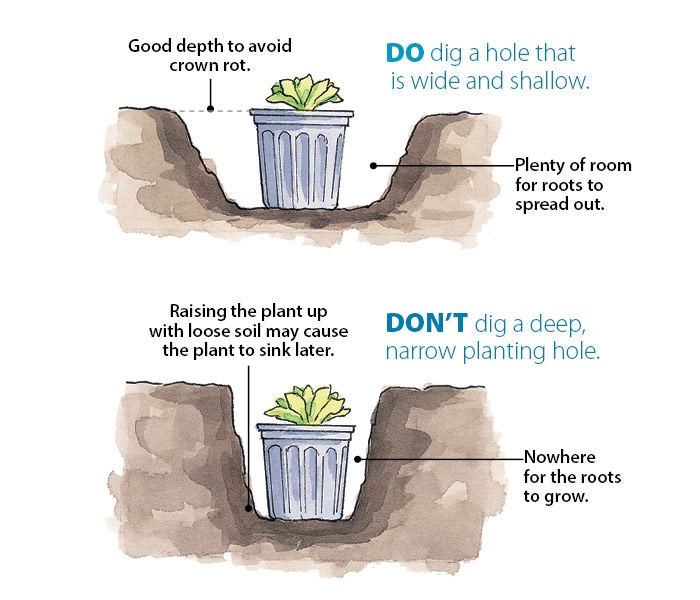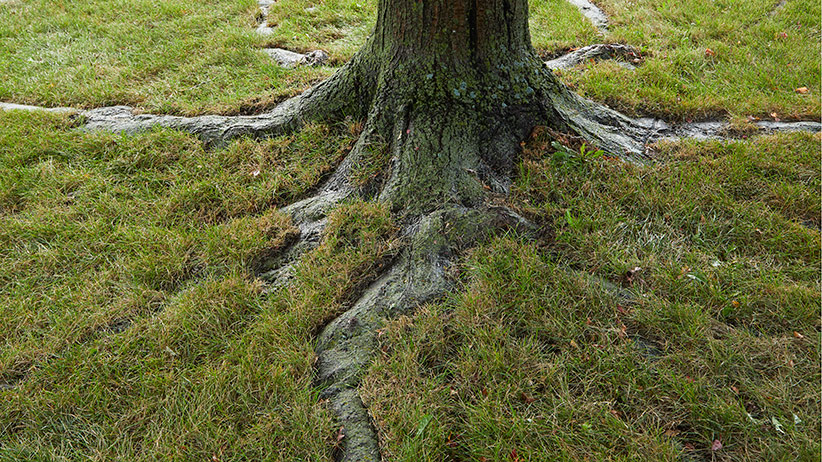Get perennials off to a great start
After you’ve spent the day digging and planting, you don’t want to watch your perennials struggle — especially after you’ve spent a small fortune on them. Luckily, you don’t have to. Here are our best planting tips so your perennials will make the move easily. They may not even skip a beat.
Amend the soil
To start, of course, you’ll want to get your soil in great shape with compost and other amendments. In a large planting bed, tilling in advance not only makes the soil easier to dig, it’ll save you time and energy. If you’re just putting in a plant or two, shoveling compost into each hole and working it in is fine, too.
To prevent stressing your new plants, the best time to get them in the ground is when it’s cool and cloudy, a day or two after a light rain. The next best time is when you have time to do it! So, make sure the plants and the garden are ready when you are.
You Might Also Like:
How to Plant Bare Root Perennials
Tips for Buying the Best Perennials at the Garden Center
6 Dependable Perennials

Step 1: Plan where you want to plant new perennials
Set the potted perennials in place the night before you’re going to plant. It’s much easier to adjust the design now than after everything is planted. The plants in the photo above are getting a good preplanting drink. After all, you don’t want to plant wilted, dry perennials; it’ll be much too stressful for them. The garden soil gets a light sprinkling, too. Why the soil? The moisture is good for all of the beneficial bacteria that may have been disturbed as you worked the soil. You don’t need to water until it’s muddy, just moisten the surface a bit.

Step 2: Prepare the planting hole
Most perennials will survive in a planting hole that’s less than perfect. But you want to get your plants off to the best possible start and make sure they’ll thrive for many years.
In the photo above you’ll see a wide, shallow hole. It’s much larger than the gallon-size perennial that’s going into it. A wide hole, at least twice as wide as the pot, allows roots to push out into the loosened soil quickly to gather moisture and nutrients. The faster they can do that, the more quickly they’ll adapt to their new home and grow.

Deeper isn't always better
Don’t bother digging a deep hole. Almost all perennials will have a majority of their roots near the surface of the soil, so they don’t really go down very far. Plus, a shallow hole with gently sloping sides is usually easier to dig.
Loosening lots of soil in the bottom of the hole could cause the plant to sink too deep after it’s watered. Later, especially over winter, water will collect in the low spot and rot the crown. Don’t dig the hole any deeper than the depth of the pot the plant came in. The illustration above shows you the “dos” and “don’ts” of hole size and shape.
If you’ve prepared the soil in your new bed with lots of compost, don’t add more to the hole. The roots may never push out into the surrounding soil if you make the soil in the hole too rich. But if you’re planting new perennials in an established bed, you’ll want to amend the soil with extra compost as you dig. In either situation, don’t add granular fertilizer now — it can burn the tender new roots. Wait at least until the following spring before you use a granulated fertilizer on your new plants.

Step 3: Out of the pot
Sometimes just getting the plant out of the container can be tough. If roots are poking through the drainage holes, cut them off so the root ball will slide out more easily. Then put your fingers over the crown as you can see in the photo above and tip the pot. This way, you’re less likely to drop the plant or break stems. If the plant won’t slide out, squeeze the sides of the pot a bit and try tipping it out again. Plant still won’t budge? Hold the plant upside down and tap the lip of the pot against a hard surface.
Loosen roots
You may see roots circling at the bottom of the root ball. Pull them loose or they may continue to circle instead of spreading out into the soil, which can stunt or eventually even kill the plant. Don’t worry if a few roots tear — the plant will recover quickly.
This plant doesn’t have too many roots in the upper portion of the root ball. Gently knock or brush the top couple of inches of potting mix away. Now you can see the crown better so it’s easier to be sure you’re planting at the right depth.
Dealing with rootbound plants
Once in a while, you may come across a plant that’s been growing in its pot so long that the roots have grown into a hard, solid mass. When you find one of those, you’ll need to take more drastic measures to loosen them. Make one slice (a soil knife works well for this task), about a third of the way up, into the solid mass of roots. Then make shallow cuts on two sides to keep the upper roots from continuing to spiral. Gently pull the two halves apart. When you set the plant into the hole, keep these sections spread apart.
You Might Also Like:
How to Buy the Best Perennials at the Garden Center
3 Simple Ways to Divide Plants
Long-Lived Perennials for your Garden

Step 4: Into the hole
Put the root ball in the hole and spread the roots out in the bottom. Lay something straight, such as the yardstick in the photo above, across the top of the hole to check the planting depth. When in doubt, it’s better to plant the crown a bit too high rather than too deep.

Now push a couple inches of soil back into the hole as you see in the photo above, and adjust the depth if you need to. Gently firm the soil around the root ball to support the plant.

Watering in new perennials
It’s best to pour water around the roots instead of on the crown, as you can see in the photo above. The plant is less likely to sink this way. You can use an organic liquid fertilizer, such as fish emulsion, now to get the roots moving out into the soil faster. Let the water drain away and check the depth again. Finish backfilling the hole, making sure to cover all of the potting mix. (If you don’t, it can wick moisture away from the roots.) Don’t tamp this upper layer of soil. Now you’re ready to move on.
With everything planted, soak the area with a sprinkler. Run it enough to keep the bed moist for the first week or two, then slowly decrease the watering to encourage root growth. Shredded bark mulch will help conserve water and reduce weeds that would compete for moisture.
You Might Also Like:
Find the Right Garden Hose
How to Water Perennials
How to Use Fertilizer in the Garden

Mulching
Leave a little space between the mulch and the base of the plant, as you can see in the illustration above. That’ll avoid any problems with crown rot.
Keep an eye on your plants as they get going. Wilted plants, especially when you spot them early in the morning or late in the evening, need a drink. But wilting during the heat of the day is often normal, so don’t overwater and drown your new garden.
Once the plants are growing, it’s OK to use a 10-10-10 fertilizer at half the recommended rate on the label. Next spring, you can begin full-strength feeding. Even after it’s fully established, usually an entire growing season, a perennial garden needs an inch of water per week. It could be from rain or a hose — the plants won’t object to either.
Success is judged by healthy, flourishing perennials. Some will likely flower the first summer, but you’ll get the full show the following year — and for many years to come!
















